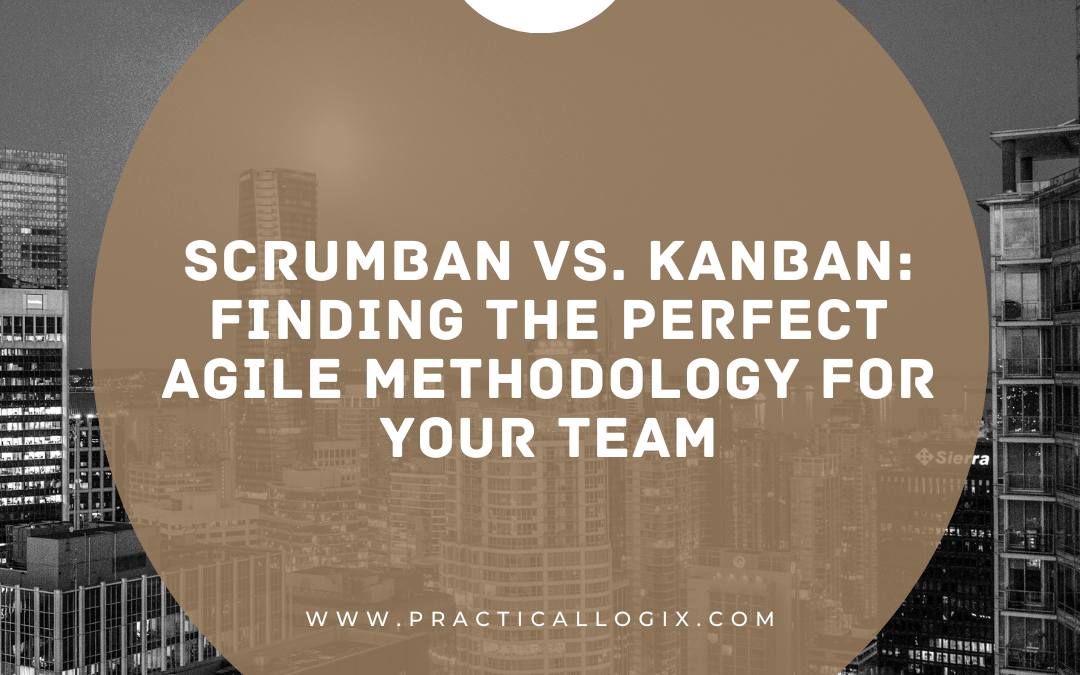In the realm of Agile project management, two methodologies that have gained considerable popularity are Scrumban and Kanban. Both approaches offer efficient ways to manage work, enhance team productivity, and deliver value to customers. This blog post aims to delve into the key distinctions between scrumban vs kanban, assisting you in determining which one best suits your team’s needs.
What is Kanban?
Kanban is an Agile methodology that originated from the manufacturing industry, particularly the Toyota Production System. The fundamental concept behind Kanban is the visualization of work and the restriction of work in progress (WIP) to enhance efficiency and minimize bottlenecks. Kanban boards, often segmented into columns representing different work stages, aid teams in visualizing tasks and their progression through the process.
Key principles of Kanban include:
- Visualize Workflow: Kanban boards provide a visual depiction of all work items, facilitating an understanding of the status of each task.
- Limit Work in Progress: By establishing WIP limits for each board column, teams ensure they do not overwhelm themselves with excessive tasks simultaneously, thus preventing multitasking and improving focus.
- Manage Flow: Teams continuously monitor the flow of work and strive to optimize it by identifying bottlenecks and implementing improvements.
- Make Process Policies Explicit: Clearly define rules and policies for how work moves through the system, ensuring consistency and reducing ambiguity.
What is Scrumban?
Scrumban, as the name implies, is a hybrid methodology that combines elements of Scrum and Kanban. It is designed to provide the structure of Scrum while incorporating the flexibility and flow-based aspects of Kanban. Scrumban can be particularly beneficial for teams looking to transition gradually from Scrum to a more flow-oriented approach.
Key characteristics of Scrumban include:
- Sprints: Scrumban retains the concept of fixed-duration sprints from Scrum, typically lasting two to four weeks. This enables time-boxed planning and review sessions.
- Kanban Boards: Similar to Kanban, Scrumban teams utilize visual boards to track and manage work. The board may consist of columns representing sprint phases, such as “Backlog,” “In Progress,” and “Done.”
- Continuous Flow: While Scrumban incorporates sprint planning and review, it allows for the continuous flow of work. Teams can pull new items into the sprint as soon as they have capacity, rather than waiting for the next sprint planning session.
Scrumban vs. Kanban: Which is the Right Choice for Your Team?
When it comes to choosing between Scrumban and Kanban, the decision depends on your team’s specific requirements and preferences. Here are some factors to consider in order to make an informed choice:
- Team Maturity: If your team is already familiar with Scrum but desires more flexibility in their workflow, Scrumban might be the ideal option. On the other hand, Kanban is often favored by teams new to Agile practices.
- Predictability vs. Flexibility: Scrumban strikes a balance between the predictability of Scrum (with fixed-length sprints) and the flexibility of Kanban. If you need to meet strict deadlines while accommodating changes, Scrumban can be a suitable fit.
- Work Item Size: Evaluate the size and variability of your work items. Kanban is highly effective for teams with tasks of varying sizes, whereas Scrumban works well when tasks can be reasonably estimated within a sprint.
- Continuous Improvement: Both methodologies support continuous improvement, but Kanban’s explicit focus on flow makes process enhancements more apparent.
- Team Preferences: Consider your team’s preferences and work culture. Some teams thrive with the structure of Scrum, while others prefer the flexibility and autonomy offered by Kanban.
In conclusion, both Scrumban and Kanban are valuable Agile methodologies, each with their own strengths. Scrumban acts as a middle ground between Scrum and Kanban, making it an excellent choice for teams seeking balance. Kanban, on the other hand, provides maximum flexibility and is well-suited for teams that value visualizing workflow and continuous improvement. Ultimately, the decision between Scrumban and Kanban should align with your team’s specific needs and objectives. Take the time to evaluate which approach best fits your team and be open to adapting as your team evolves.


